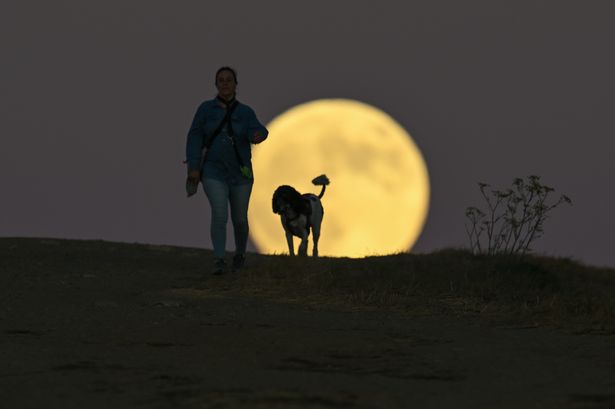Tonight, stargazers have the opportunity to observe the remarkable July full moon, popularly known as the Buck Moon. This celestial event will peak at 4:36 p.m. EDT (20:36 GMT) on July 10, 2025, as it rises above the southeastern horizon. Unlike previous full moons this year, the Buck Moon offers unique features that have captured the attention of both amateur and seasoned astronomers.
The Buck Moon derives its name from the period when male deer, or bucks, begin to grow new antlers. This annual cycle is a natural phenomenon that occurs after the breeding season, during which bucks shed their antlers due to hormonal changes. The full moon is also referred to as the Thunder Moon, reflecting the early summer storms that often accompany this time of year. In Europe, it is sometimes called the Hay Moon, a nod to the hay harvesting season in July. Such names are rooted in Native American traditions, which often linked the full moon to seasonal changes and significant natural events.
Unique Characteristics of the Buck Moon
This year, the Buck Moon is particularly noteworthy due to its proximity to the summer solstice, a time when the sun is positioned high in the sky. As a result, the full moon appears relatively low on the horizon. According to Space.com, the moon’s low trajectory will be intensified by a phenomenon called a Major Lunar Standstill. This occurs when the gravitational pull of the sun alters the moon’s orbit, causing it to travel either exceptionally high or low across the sky.
In addition to its striking appearance, the Buck Moon will also be the farthest full moon from the sun in 2025, occurring near the aphelion—the point in Earth’s elliptical orbit where it is furthest from the sun. While this distance will not produce any visible effects, it adds an intriguing dimension to this lunar event.
How to Observe the Buck Moon
The visibility of the Buck Moon will vary depending on geographic location. For those interested in catching a glimpse, resources such as timeanddate.com and in-the-sky.org provide tailored information based on specific locations. As the sun sets, prepare to witness a stunning lunar display that combines natural beauty with astronomical significance.
This evening’s full moon not only serves as a visual spectacle but also connects observers to the rhythms of nature and the cycles of the seasons. Whether one is an avid astronomer or simply enjoys the beauty of the night sky, the Buck Moon promises to be a memorable experience.








































































